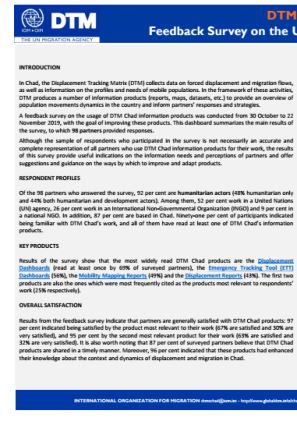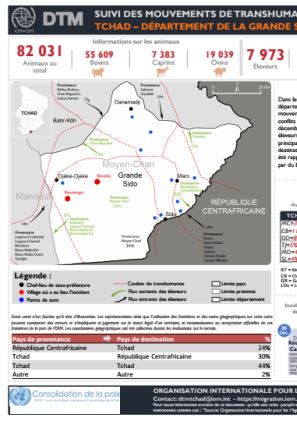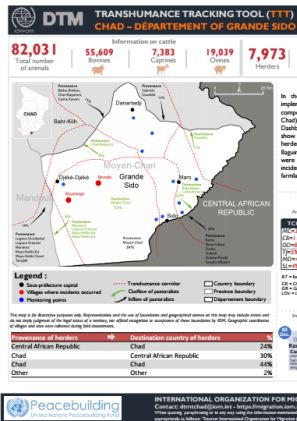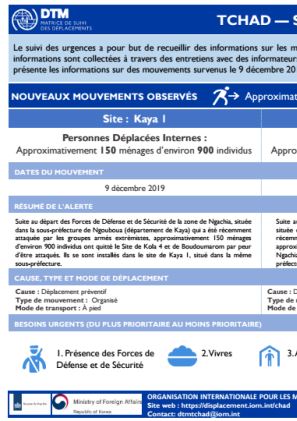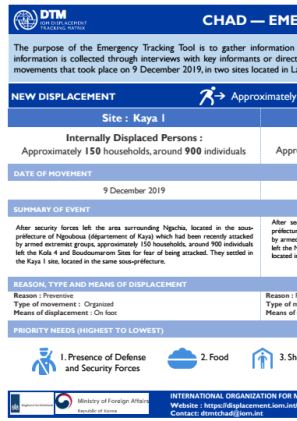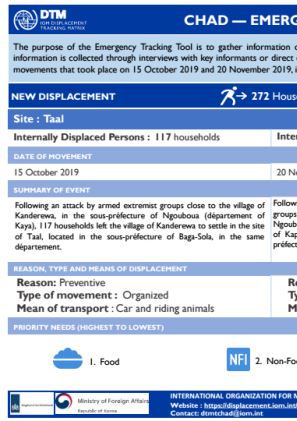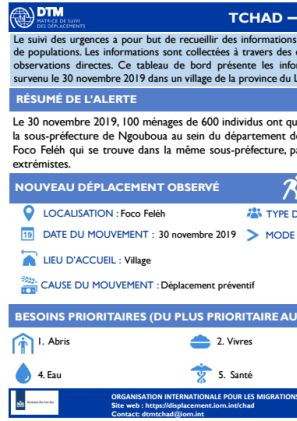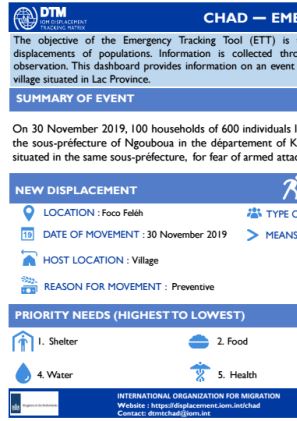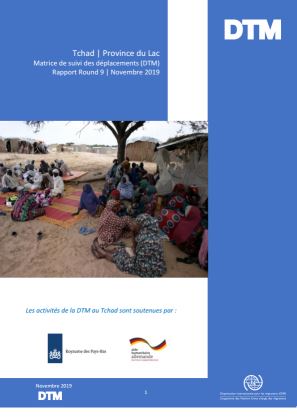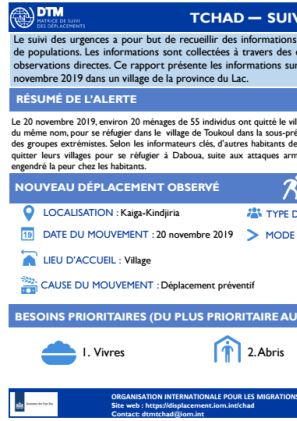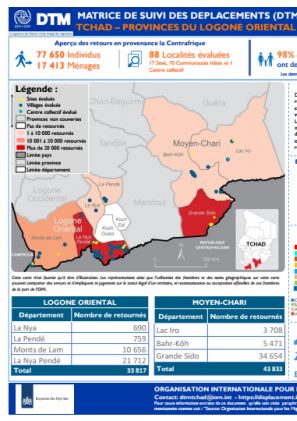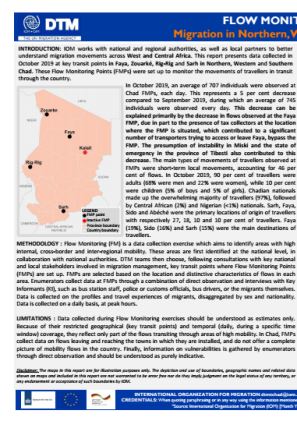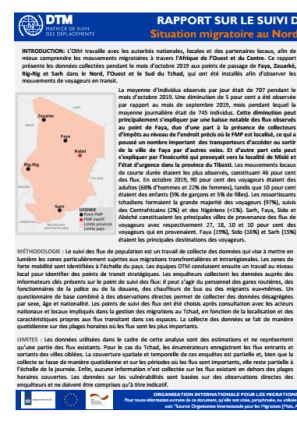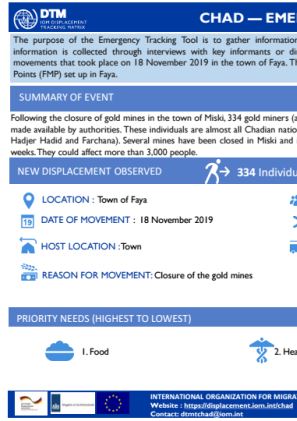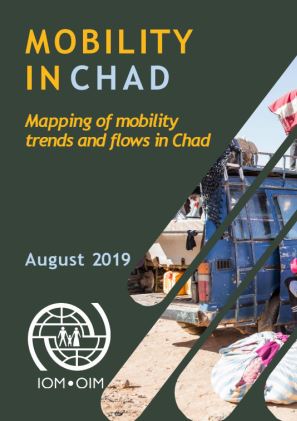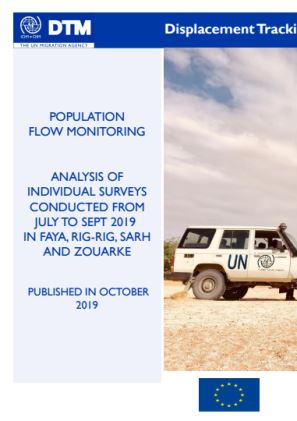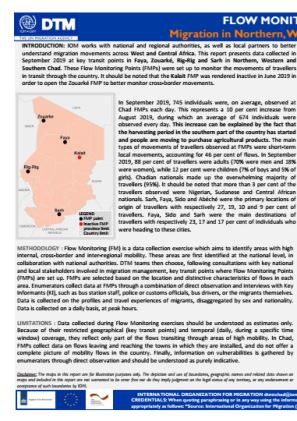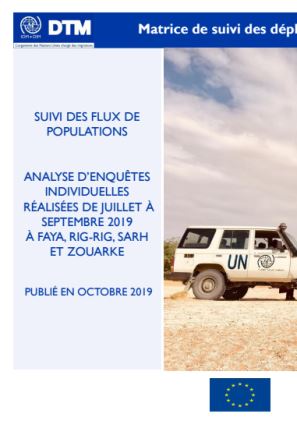-
Countries
-
Data and Analysis
-
Special Focus
-
Crisis Responses
Chad
IDPs tracked
Displacement Movements
452,000
IDMC 2023
Data collection round
About Chad
Since 2014, the International Organization for Migration (IOM) has been working with the Government of Chad and other relevant partners to conduct displacement and flow monitoring across multiple provinces of Chad: Lac, Moyen-Chari, Logone Oriental, Borkou, Tibesti, Borkou and Ennedi Ouest.
The displacement dynamic analysis is rooted in the experiences of the 2011 response to the Libya crisis during which IOM supported more than 150,000 people arriving in northern Chad. Since then, numerous crises, including the Lake Chad Bassin crisis, the crisis in the Central African Republic and recurring displacement dynamics in Libya and Sudan have necessitated the development of a coherent approach to monitoring of migration flows to Chad. Most recently, the renewed interest in Chad as a transit and departure country for migrant flows towards Libya and potentially onwards to Europe, have inspired a new quality and coherence in IOM’s migration data management approach in Chad.
The Displacement Tracking Matrix (DTM) is an information management system that tracks and monitors the displacement and population mobility. It is designed to regularly capture, process, and disseminate various layers of information to provide a better understanding of the evolving needs of mobile populations, on site or en route both of forced displacement and other migration flows. Adapted from the global methodology, relevant DTM components are being carried out in targeted locations to facilitate displacement management, the delivery of immediate humanitarian services and emergency response, informing transition and durable solutions and development-centred policy.
Since its launch, DTM has grown to a fully integrated component of the national and sub-national humanitarian information management architecture, informing the Government of Chad and international response both humanitarian and developmental across the majority of sectors/clusters and as part of the commitment of the international community and the Government of Chad to the New Way of Working (NWOW) as part of the humanitarian-development nexus.
Contact
DTM Chad
DTMChadCoordinationTeam@iom.int
Current Donors
- USAID
- Netherlands
- CERF
- Peace Building Fund
- Spain
Tchad — Enquête sur l'Utilisation des Produits d'Information (Décembre 2019)
La Matrice de suivi des déplacements (DTM) est mise en œuvre au Tchad pour recueillir des données sur les déplacements forcés et les flux migratoires, ainsi que sur les profils et besoins des populations mobiles.
Dec 14 2019
Tchad — Enquête sur l'Utilisation des Produit…
Chad — Feedback Survey on the Use of Information Products (December 2019)
In Chad, the Displacement Tracking Matrix (DTM) collects data on forced displacement and migration flows, as well as information on the profiles and needs of mobile populations.
Tchad — Dashboard de suivi des mouvements de transhumance 2 (Septembre - Décembre 2019)
Ce tableau de bord présente les résultats de collectes réalisées de septembre à décembre 2019. Ils indiquent un début de transhumance du nord vers le sud du Tchad. La quasi-totalité des éleveurs était de nationalité tchadienne et 53 pour cent étaient des mineurs.
Chad — Transhumance Tracking Tool Dashboard 2 (September - December 2019)
This Dashboard presents the results data collected from September to December 2019. They show the beginning of transhumance from the Northern to the Southern part of Chad. Most of the herders were Chadian nationals and 53 per cent were children.
Tchad — Suivi des Urgences 33 (9 décembre 2019)
Suite au départ des Forces de Défense et de Sécurité de la zone de Ngachia située dans la sous-préfecture de Ngouboua (département de Kaya) qui a été récemment attaquée par les groupes armés extrémistes, approximativement 150 ménages d’environ 900 individus ont quitté le Site de Kola 4 et de Boud
Dec 11 2019
Tchad — Suivi des Urgences 33 (9 décembre 2019)
Chad — Emergency Tracking Tool Report 33 (9 December 2019)
After security forces left the area surrounding Ngachia located in the sous-préfecture of Ngouboua département of Kaya) which had been recently attacked by armed extremist groups, approximately 150 households, around 900 individuals left the Kola 4 and Boudoumarom Sites for fear of being at
Tchad — Rapport sur le suivi des flux de populations 32 (Novembre 2019)
Ce rapport présente les données collectées pendant le mois de novembre 2019 aux points de passage de Faya, Zouarké, Rig-Rig et Sarh dans le Nord, l’Ouest et le Sud du Tchad, qui ont été installés afin d’observer les mouvements de voyageurs en transit.
Chad — Emergency Tracking Tool Report 32 (15 October and 20 November 2019)
Following an attack by armed extremist groups close to the village of Kanderewa in the sous-préfecture of Ngouboua (département of Kaya), 117 households left the village of Kanderewa to settle in the site of Taal, located in the sous-préfecture of Baga Sola, in the same département.&nbs
Tchad — Suivi des Urgences 32 (15 octobre et 20 novembre 2019)
Suite à une attaque par des groupes armés extrémistes aux alentours du village de Kanderewa situé dans la sous-préfecture de Ngouboua (département de Kaya), 117 ménages ont quitté le village de Kanderewa pour s’installer dans le site de Taal, situé dans la sous-préfecture de Baga Sola, dans le
Tchad — Suivi des Urgences 31 (30 Novembre 2019)
Le 30 novembre 2019, 100 ménages de 600 individus ont quitté le village de Tchoukou Kafi situé dans la sous-préfecture de Ngouboua au sein du département de Kaya, pour se réfugier dans le village de Foco Feléh qui se trouve dans la même sous-préfecture, par crainte d’attaques armées des gro
Dec 06 2019
Tchad — Suivi des Urgences 31 (30 Novembre 2019)
Chad — Emergency Tracking Tool Report 31 (30 November 2019)
On 30 November 2019, 100 households of 600 individuals left the village of Tchoukou Kafi located in the sous-préfecture of Ngouboua in the département of Kaya, for the village of Foco Feléh which is situated in the same sous-préfecture, for fear of armed attacks by extremist groups.
Tchad — Rapport sur les déplacements 9 (1 Août — 17 Septembre 2019)
Ce neuvième rapport de la DTM dans la province du Lac donne un aperçu de la situation de déplacement dans cette province du Tchad, où les déplacements de populations sont dus à l’insécurité liée aux violences perpétrées par des groupes extrémistes armés.
Chad — Emergency Tracking Tool Report 30 (20 November 2019)
On 20 November 2019, about 20 households of 55 individuals left the village of Kaiga-Kindjiria located in the sous-préfecture of the same name, and fled to the village of Toukoul in the sous-préfecture of Daboua for fear of attacks perpetrated by extremist groups.
Tchad — Suivi des Urgences 30 (20 novembre 2019)
Le 20 novembre 2019, environ 20 ménages de 55 individus ont quitté le village de Kaiga-Kindjiria, situé dans la sous-préfecture du même nom, pour se réfugier dans le village de Toukoul dans la sous-préfecture de Daboua par crainte des attaques armées des groupes extrémistes.
Nov 26 2019
Tchad — Suivi des Urgences 30 (20 novembre 2019)
Chad — Logone Oriental and Moyen-Chari — Displacement Dashboard 2 (October — November 2019)
Ever since the start of the Central African crisis in 2013, Chadian nationals have been fleeing the Central African Republic to return to Chad, and in particular to the country's southern provinces (Moyen-Chari, Mandoul, Logone Oriental and Logone Occidental).
Tchad — Logone Oriental et Moyen-Chari — Dashboard de déplacement 2 (Octobre — Novembre 2019)
Dès le début de la crise centrafricaine en 2013, des ressortissants tchadiens ont quitté la République centrafricaine pour retourner au Tchad, notamment vers les provinces du Sud (Moyen-Chari, Mandoul, Logone Oriental et Logone Occidental).
Chad — Flow Monitoring Report 31 (October 2019)
In October 2019, an average of 707 individuals were observed at Chad FMPs, each day. This represents a 5 per cent decrease compared to September 2019, during which an average of 745 individuals were observed every day.
Nov 21 2019
Chad — Flow Monitoring Report 31 (October 2019)
Tchad — Rapport sur le suivi des flux de populations 31 (Octobre 2019)
L’OIM travaille avec les autorités nationales, locales et des partenaires locaux, afin de mieux comprendre les mouvements migratoires à travers l’Afrique de l’Ouest et du Centre.
Chad — Emergency Tracking Tool Report 29 (18 November 2019)
Following the closure of gold mines in the town of Miski, 334 gold miners (all of them men) were transported to Faya on board vehicles made available by authorities.
Tchad — Suivi des Urgences 29 (18 novembre 2019)
Suite à la fermeture de certaines mines aurifères dans la ville de Miski, 334 orpailleurs (tous des hommes) ont été transportés jusqu’à Faya par des véhicules mis à disposition par les autorités.
Nov 19 2019
Tchad — Suivi des Urgences 29 (18 novembre 2019)
Chad — Mobility Mapping Report (August 2019)
This report comprises of a set of maps presenting the different migratory flows and trends in Chad. It presents the different population movements recorded from, to and within the Chadian territory and provides information about the profile of mobile populations.
Nov 17 2019
Chad — Mobility Mapping Report (August 2019)
Chad — Flow Monitoring Survey Report (July—September 2019)
This document offers an analysis of 775 individual surveys carried out between July and September 2019 with travellers crossing the four Flow Monitoring Points (FMPs) of Zouarke, Faya, Rig-Rig and Sarh.
Chad — Flow Monitoring Report 30 (September 2019)
This report presents data collected in September2019 at key transit points in Faya, Rig-Rig, Sarh and Zouarké in Northern, Western and Southern Chad. These Flow Monitoring Points (FMPs) were set up to monitor the movements of travellers in transit through the country.
Tchad — Suivi des flux de populations — Analyse d'enquêtes individuelles (Juillet — Septembre 2019)
Ce document présente une analyse de 775 enquêtes individuelles effectuées entre juillet et septembre 2019 auprès des populations en mouvement passées par quatre points de passage (Zouarke, Faya, Rig Rig et Sarh).



